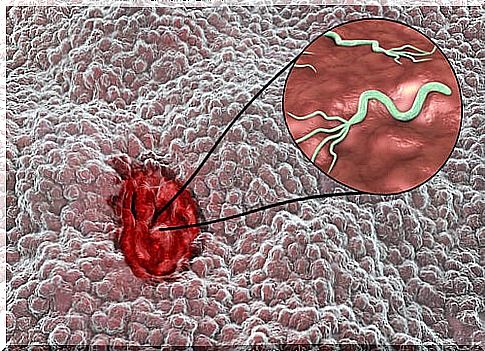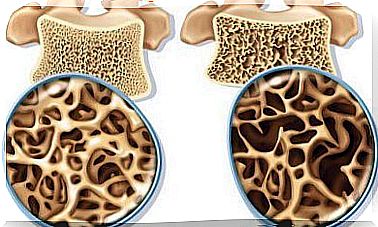What Is Omeprazole?

Omeprazole is the leading proton pump inhibitor drug that reduces stomach problems.
Omeprazole is a drug from the proton pump inhibitor (PPI) family. It is therefore used to reduce stomach problems, such as acidity and gastritis, among others.
We will therefore explain the different aspects of omeprazole to you below:
- Action mechanism
- Pharmacokinetics
- Metabolism
- Adverse effects
- Interactions
- Indications
Action mechanism
The stomach has an acidic pH due to the HCl produced by the parietal cells of the gastric mucosa. This characteristic acidic pH of the stomach is essential for the digestion of food to obtain:
- Good protein denaturation
- Activate pepsinogen into pepsin so that proteolysis occurs, that is, the breaking of peptide bonds of proteins.
- Prevention of bacterial infections. Bacteria generally do not survive in acidic environments.
Excessive secretion of gastric acid can therefore cause damage to the lining of the gastrointestinal system, and produce ulcers mainly in the stomach and duodenum.

The secretion of gastric acid takes place in several stages:
- Secretion of H + and CI- ions separately in parietal cells.
- Their combination to form HCI in the canaliculi.
- Secretion of acid from the canaliculi to the lumen of the stomach.
Proton pump inhibitors, like omeprazole, work during the last stage of acid production. They also unite irreversibly with the ATPasa H + / K- pump, achieving a maximum pH dependent union with a pH <6.
This inhibition occurs thanks to the formation of a covalent SS bond between the sulfonylurea and a cysteine residue accessible from the proton pump, specifically omeprazole links the Cys-813 residue and Ces-892.
Pharmacokinetics
Omeprazole, like other IBPs, is given in its neutral form, which is inactive. Being a neutral form, it will therefore be lipophilic, that is to say, insoluble in water. It will also be able to easily cross cell membranes and reach the canaliculi of parietal cells without any problem.
These cells have an acidic pH. They will therefore transform the neutral form of omeprazole into an active protonated form which will thus be able to set in motion the mechanism of action and unite irreversibly with the proton pump while blocking its action.
- It is labile in an acidic environment. Oral preparations therefore have an enteric layer.
- Its union with plasma proteins is high, more than 95%, which increases its possibility of interaction with other drugs, since a shift in the dose may occur.
- It is absorbed in the small intestine in about 3 to 6 hours.
- Oral bioavailability is approximately 35%, and may increase up to 60% when taken once daily.
- Its volume of distribution is around 0.3 L / Kg.
Metabolism
Omeprazole suffers from hepatic metabolism due to the CYP 450 system. The major part of its metabolism depends in fact on the specific isoenzyme CYP2C19.
Most of the administered dose is cleared as inactive metabolites through the urine and the remainder through the faeces, mainly from biliary secretion.
Side effects
It should be noted that omeprazole also has a series of side effects. Although most of them are not precisely related to how it works, they should be known if you are taking this medicine. We find among others:
- During prolonged treatments it can cause severe hypomagnesemia.
- It also increases the risk of bone fractures.
- Skin changes such as rashes or itching.
- Gastrointestinal changes such as diarrhea, constipation, abdominal pain, nausea or vomiting.

- Peripheral neuropathy
- Hypersensitivity
- Hemolytic anemia
- Also reduces the absorption of vitamin B12, which increases the risk of suffering from megaloblastic anemia.
- Risk of subacute cutaneous lupus erythematosus.
- Also increases the levels of cromagranin A, a protein found at high levels in some types of cancer.
Omeprazole interactions
Omeprazole interacts with many drugs if they are taken at the same time. It therefore reduces or diminishes their action.
1. It can indeed reduce the action of:
- Clopidrogel
- Antifungals
- Phenytoin
- Rifampicin
- Micro phenolate
- Other
2. It can also increase the action of:
- Methotrexate
- Amphetamines
- Benzodiazepines
- Carvedilol
- Citalopram
- Escitalopram
- Ciclosporin
- Warfarin
- Other
In fact, it can interact with many drugs. You should therefore consult your doctor to prevent possible complications if you are taking omeprazole at the same time as other medicines.
Indications
This medicine is used for:
- Gastric ulcers
- Duodenal ulcers
- Reflux esophagitis
- Zollinger-Elliston syndrome
- Gastritis
- Functional dyspepsia









